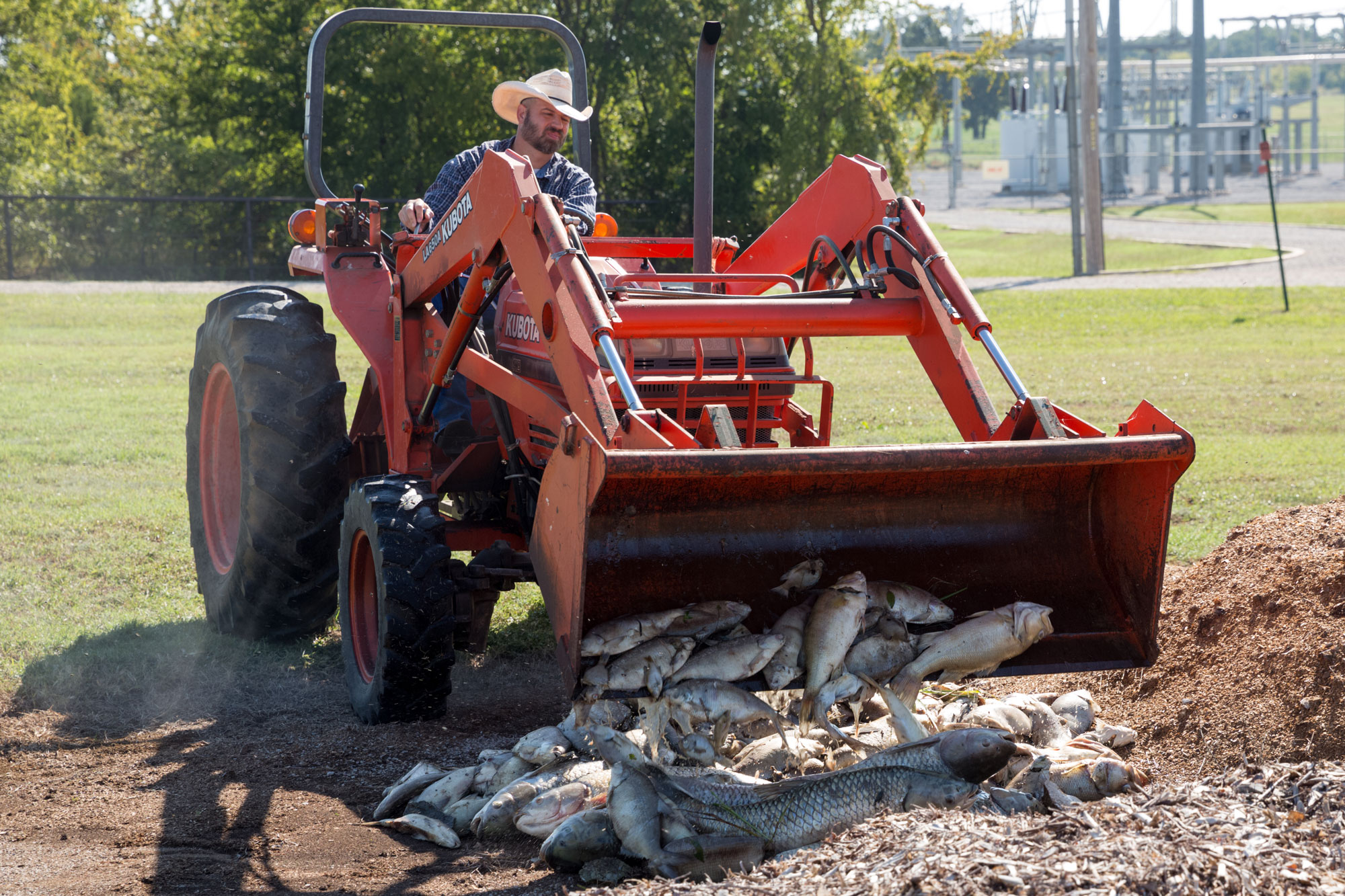
Agricultural News
Finding Dead Fish in Your Ponds This Summer? Noble Says Low Dissolved Oxygen Might be the Culprit
Fri, 26 Jul 2019 13:39:08 CDT
 One of the most common calls we get during late summer regarding pond management is about a pond full of dead fish, and the owner wants to know what happened. People are worried the water has been poisoned and is unsafe. The vast majority of time, the fish kill is a result of low dissolved oxygen levels in the pond.
One of the most common calls we get during late summer regarding pond management is about a pond full of dead fish, and the owner wants to know what happened. People are worried the water has been poisoned and is unsafe. The vast majority of time, the fish kill is a result of low dissolved oxygen levels in the pond.
There are several reasons this phenomenon happens in summer, and in order to explain we need to discuss some chemistry.
First, warm water physically cannot hold as much dissolved oxygen as cold water. So the maximum potential for dissolved oxygen is lower during the summer than other times of year. Second, there are plants growing during the summer that are less abundant during the rest of the year. A byproduct of photosynthesis is oxygen. So when the sun is shining, plants put oxygen into the water. However, during nighttime, plants use oxygen along with all the critters in the water. This creates a high demand for oxygen at during the night. If the plants and animals use more oxygen during the night than is available, a fish kill occurs. Dissolved oxygen levels are highest in the afternoon and lowest right before dawn. A common sight in a pond with low levels of dissolved oxygen is fish piping (looks like gulping) at the surface of the water in the early morning. After photosynthesis starts back up, oxygen levels increase and the fish stop piping.
DEAD PLANTS CAN LEAD TO DEAD FISH
Another common reason for a fish kill due to low oxygen is when aquatic plants die, either naturally or due to human intervention. If we use herbicide to spray large volumes of nuisance vegetation, the dying and decomposing plants can lower oxygen levels enough to cause a fish kill. This is why we usually recommend spraying no more than 25%-30% of the total surface area of a pond or lake, and then waiting a few weeks to treat another section. This is one reason why it is important to treat early in the season before the vegetation becomes too abundant and water temperature becomes warm.
The decomposition process itself uses up dissolved oxygen. As plants and animals die and sink to the bottom of the pond, they start to decompose. Most of us who have gone swimming in a pond have experienced the cold layer of water about 5-6 feet below the surface. This is known as thermal stratification. The warm and cold layers don't mix very much, which means they don't transfer dissolved oxygen. As things decompose on the bottom of the pond, oxygen levels in the lower layer become very low. If we get a cold rain in late summer or early fall, the top layer can cool quickly enough where the two layers mix and the pond "turns over." This rapid turnover can cause a fish kill due to the low oxygen layer and decomposing biological material mixing with the upper layer of water.
Phytoplankton play a major role in fish kills as well. Phytoplankton are microscopic plants that give water a green hue. If they are too abundant, they can cause a fish kill due to high demand overnight, or during a phytoplankton die-off caused by too many cloudy days or runoff that causes turbid waters. Phytoplankton levels are highest in ponds that have high nutrient levels in the water, usually associated with runoff from the watershed.
HOW TO AVOID LOW DISSOLVED OXYGEN LEVELS
The best way to mitigate fish kills associated with dissolved oxygen levels is to reduce the causes of low dissolved oxygen.
Methods include:
1. Keeping a good grass cover in the watershed to reduce the amount of nutrients and soil that enter the water.
2. Not treating large volumes of aquatic vegetation with herbicides. Do treat early in the season, or use biological control methods such as grass carp.
3. Using diffusers. Note: Fountains are popular among pond managers to increase dissolved oxygen, but most fountains are for looks only and do not put much oxygen in the water.
4. Taking emergency methods such as backing up a tractor to and running a shredder in the water, leaving a boat on a trailer and running the propeller, or using a large irrigation hose to blast water across the surface of the water to incorporate oxygen.
Most ponds will not experience a fish kill, so you may not need to use these techniques. However, if your pond is susceptible to fish kills, it might be worth adding management steps that increase oxygen and protect your fishing resource.
Source - Noble Research Institute
WebReadyTM Powered by WireReady® NSI
Top Agricultural News
More Headlines...





